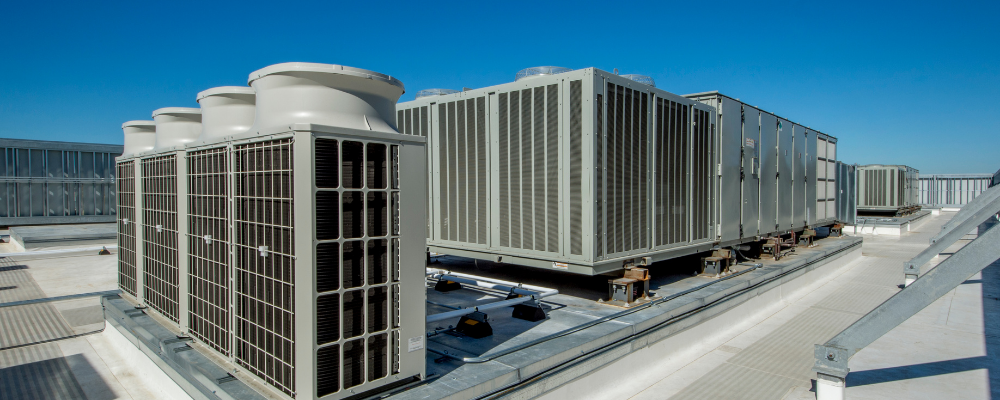Drop off your CV
We'd love to hear from you. Send us your CV and one of our specialist consultants will be in touch.

HVAC/R is an industry often spoke about by women as one they ‘fell’ into; male dominant and labour-focussed it doesn’t particularly promote itself to the female population. But a more diverse and balanced workforce brings with it endless benefits and, with a talent shortage already apparent, by not actively trying to engage with more women firms are missing out on a huge untapped resource. So why are HVACR companies failing to fill the gender gap? And what can they do to improve their female numbers?
The number of women in HVACR is lower than any other sector of construction. In 2015 females made up just over 1% of the workforce. 99% of Heating, Air Conditioning and Refrigeration mechanics and installers are male, and even all the way up to senior level, the lack of diversity – both gender and otherwise – puts HVACR as an industry behind the times.
Add into the equation an ageing workforce and the talent pool becomes even sparser. It is estimated that 53% of workers in the skilled trades are over the age of 45, and nearly 19% are between 55 and 64. According to the Social Security Administration, about 22% of the U.S. workforce is set to retire within the next eight years. In the HVACR industry, this number is much higher.
Recent studies from the HVACR Workforce Development Foundation and the U.S. Department of Labor (DOL) estimate that 115,000 new HVACR workers must be trained by 2022 to meet the expected demand of this aging industry. They have also anticipated a 14% increase in HVACR positions nationwide between 2014 and 2024, which comes in the form of 39,600 new jobs. By 2020, the predicted shortfall of skilled workers in America will reach nearly 10 million.
(For more information on the talent shortage in HVACR, read my previous blog: How To Close The Talent Gap In HVAC: Bespoke Hiring In 2017)
Whilst in this respect the future of this field looks uncertain, a clear solution lies in the significant, available talent pool within the female population. Women make up half of the population. If the industry isn’t working to attract female candidates, that’s half of the talent pool they’re missing out on — from entry-level up to C-suite positions. In a time when the HVACR industry is struggling to find qualified candidates, women represent the largest unutilised resource.
And why wouldn’t they utilise women? Female technicians are proving a huge success for Western Heating & Air Conditioning in Orem, Utah, with the majority of their customer base being female and an openly diverse hiring strategy appealing directly to them. What’s more, their Owner and Vice President Angie Snow is herself one clear example of a female at senior level proving massively successful.
As with every industry, having more female voices at corporate level is very important. More general research – not even limited to HVACR – shows increased diversity at senior level influences an increase in sales, profit and productivity. A diverse group has more alternative viewpoints, innovative solutions and new ways of doing business. Those companies paving the way for women in the HVACR industry are already reaping the rewards.
Corporations exist with the sole purpose of boosting female participation in this industry, and by reaching out to schools they are encouraging more young women to consider HVACR as a profession. The organisation Women in HVACR is but one of these, and is perhaps most well-known for its scholarships. They offered 2 within the last year for $2000, targeting young women early on in their academic career.
In a similar fashion, companies like Johnson’s Controls are working with external partners on programmes specifically in place to onboard more women. Their ‘Next Chapter’ program is driven by the Society of Women Engineers and iRelaunch (a career re-entry firm) to try to increase the STEM talent pipeline.
Other companies are setting up their own female-focussed sub groups, such as Women of AIRAH, a branch of The Australian Institute of Refrigeration, Air Conditioning and Heating. They openly promote diversity, representation and inclusion within their business by closely supporting and mentoring their female employees.
As the industry has evolved and work has become less physical and more technological, not enough has been done to make HVACR a clear career choice for more women. As the talent shortage grows larger each year, the need to address the percentage of women in HVACR becomes more pressing, along with the perception of the industry as a male-only space. For HVACR businesses to continue to grow they need to find enough quality employees for the future, which means that owners must look outside of the industry’s preconceived notion of a HVACR tradesman, and HVACR VP.
With Science, Technology, Engineering, and Mathematics (STEM) taking a larger role in schools, it is likely that 10 years from now there will be a distinctly higher percentage of women going into engineering professions and this will no longer be an issue, but until that time, companies need to increase their efforts to appeal more to the female population.
The HVACR team at CSG specialise in the recruitment of specialist talent and have experience conducting female-focussed hiring strategies for existing clients. With an unrivalled network of candidates worldwide, we have a strong track record of delivering quality employees to businesses ranging from start up to blue-chips.